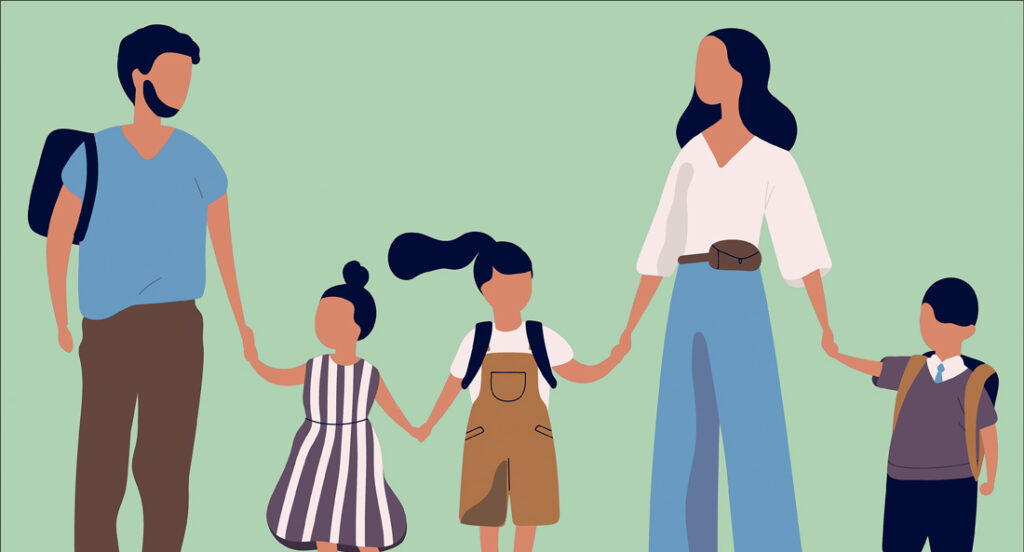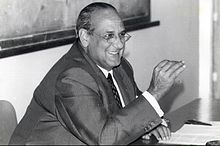Afirmar que “la familia es la célula básica de la sociedad”, que es la “primera sociedad” o el “campo de semillas del Estado” -a decir de Cicerón-, pareciera que en el siglo XXI ya no tiene significado. Más bien, se la cataloga como la responsable de impedir el desenvolvimiento personal de las personas, a libre disposición. Se piensa también que la familia está en crisis y que para no extinguirse debe replantear su dinamismo y apostar por el “pluralismo de familias”. Es decir, el término “familias” debe, en su constitución, albergar una serie de grupos sociales sin identidad propia, ya que la familia es una realidad social y como tal debe amoldarse a los cambios sociales.
Para responder a estas cuestiones es necesario construir reflexiones que tengan sustento racional. Es importante preguntarnos ¿qué es aquello que hace ser familia y no otra forma social?, ¿se puede hacer familia?, ¿cuáles son los rasgos que sustentan que la familia es la base de la sociedad y del progreso común? La familia no es una entidad que viene de la nada. Es la expresión de una naturaleza social de las personas. En primer lugar, analizaremos la dimensión social del ser humano en términos jurídicos romanos: “caput” y “persona”. En segundo lugar, corresponde precisar que, por la naturaleza social de las personas, no se vive de manera aislada, sino en familia. Por tanto, fundar una familia es también una consecuencia connatural al ser humano. En tercer lugar, se explicará en qué consiste hacer familia, cómo surge y cuál es su raíz.
jurídicos romanos: “caput” y “persona”. En segundo lugar, corresponde precisar que, por la naturaleza social de las personas, no se vive de manera aislada, sino en familia. Por tanto, fundar una familia es también una consecuencia connatural al ser humano. En tercer lugar, se explicará en qué consiste hacer familia, cómo surge y cuál es su raíz.
La familia es una institución del futuro, no sólo del pasado[1], porque tiene unas bases naturales que la sostienen siempre. El pilar fundamental de la familia está en la naturaleza humana, en aquella doble dimensión: interna (razón) y externa (relacional). Una realidad observable es que la familia está constituida por “personas”. Y la persona, como lo diría Boecio, es una sustancia individual de naturaleza racional, pero también social. Porque “toda persona humana posee la innata tendencia a compartir con otras personas los bienes más elevados, y no sólo los meramente materiales[2]. En ese sentido, se puede afirmar que la familia “goza de un genoma social propio”[3].
Para explicar esa dimensión interna, racional; y esa dimensión externa, social, veamos cómo lo entendían los juristas romanos. El término “persona” procede de la conjunción de “caput” y “persona” [4]. El primero hace referencia a la cabeza y el segundo a la máscara (metáfora que hacía alusión a las obras de teatro). La cabeza es interna, lo que cubre la máscara. Y ésta es externa, lo que expresa el personaje, lo que está representando. Extrapolando ese significado  al plano antropológico-jurídico, “caput” es la naturaleza humana, el ser, la individualidad, la racionalidad. “Persona” es la manifestación externa, social, es la personalidad que toca “representar” a cada uno o el modo de vivir. Ambos términos, o dimensiones del ser humano, conforman una unidad absoluta. El primero es la esencia, inmanente a cada ser humano; es lo que compartimos todos los humanos. Pero esa individualidad trasciende, se expresa en las relaciones intersubjetivas, en el plano social. Por tanto, el término persona que deriva del verbo “personare”, cuya raíz está en el término “persona”, significa “personarse”. Es decir, estar en presencia del otro con un nombre propio, con “voz”, presencia silenciosa[5].
al plano antropológico-jurídico, “caput” es la naturaleza humana, el ser, la individualidad, la racionalidad. “Persona” es la manifestación externa, social, es la personalidad que toca “representar” a cada uno o el modo de vivir. Ambos términos, o dimensiones del ser humano, conforman una unidad absoluta. El primero es la esencia, inmanente a cada ser humano; es lo que compartimos todos los humanos. Pero esa individualidad trasciende, se expresa en las relaciones intersubjetivas, en el plano social. Por tanto, el término persona que deriva del verbo “personare”, cuya raíz está en el término “persona”, significa “personarse”. Es decir, estar en presencia del otro con un nombre propio, con “voz”, presencia silenciosa[5].
Como puede entreverse, se puede afirmar que la persona tiene una naturaleza individual, esencia común a todo ser humano, que se complementa de modo absoluto y forma una unidad, con su dimensión social. De acuerdo con su dimensión social o esencial naturaleza sociable, la persona puede asumir una serie de roles o distintas personalidades. Es decir, todo hombre es necesariamente una persona para otro hombre –homo homini persona-, ya que no puede haber relación sin la correspondiente personalidad; “pero un mismo hombre puede tener distintas personalidades, según sean sus relaciones con otros hombres«[6]. Que pueden variar de acuerdo a la cultura, a la edad, al estatus familiar. Es decir, la persona puede ser hijo, padre, cónyuge, ciudadano, socio, etc. la naturaleza social es aquello que “le lleva a formar grupos comunitarios o societarios, además de una familia»[7].
En ese sentido, «por su naturaleza, el hombre (en su expresión varón y mujer) no puede vivir sin relación con otros. Es sociable por una exigencia natural de su existencia” [8]. Esto presupone que el hombre, por esa nota característica, es capaz de formar una familia y de constituir otras instituciones públicas y privadas más amplias, que también son conforme al derecho natural.
La familia al ser un grupo natural por excelencia, a diferencia de otros grupos sociales, para existir no necesita de personalidad jurídica. Por ello, se puede decir que es una realidad pre-legal[9], es una realidad anterior al derecho[10]. Aunque en su seno tiene rasgos de “juridicidad”. No obstante, por atender al bien, se justifica tener personalidad[11]. Tener personalidad para generar “seguridad jurídica” en las relaciones intersubjetivas dentro de la propia familia y frente a los demás en el plano social y político. En ese sentido, todo hombre es hijo y nunca deja de serlo; puede llegar a ser ciudadano político y puede dejar de serlo. “Ser hijo es incluso más radical que ser varón o mujer, porque indica el modo de originarse uno mismo: nacer. Todos nacemos, no de la tierra, sino de unos padres concretos. Nacer significa que uno se encuentra existiendo, no como un ser arrojado al mundo, en soledad, sino como hijo de alguien. La mayoría de los hombres se han encontrado a sí mismos […] se nace para ser hijos […] nos hemos encontrado a nosotros mismos en brazos de nuestros padres”[12].
y frente a los demás en el plano social y político. En ese sentido, todo hombre es hijo y nunca deja de serlo; puede llegar a ser ciudadano político y puede dejar de serlo. “Ser hijo es incluso más radical que ser varón o mujer, porque indica el modo de originarse uno mismo: nacer. Todos nacemos, no de la tierra, sino de unos padres concretos. Nacer significa que uno se encuentra existiendo, no como un ser arrojado al mundo, en soledad, sino como hijo de alguien. La mayoría de los hombres se han encontrado a sí mismos […] se nace para ser hijos […] nos hemos encontrado a nosotros mismos en brazos de nuestros padres”[12].
Se decía que la familia en su constitución singular expresa rasgos de juridicidad, conforme al derecho natural, porque en su seno se desarrollan posiciones jurídicas. Una de ellas es la filiación. Se es hijo de unos padres concretos, no se puede ocultar, así como tampoco se puede cambiar. Es una realidad absoluta e inmanente. Se vuelve a repetir, es “otra característica radical de la persona […] Filiación significa mi origen como persona con otras personas”. El hombre nace de alguien […] Ser hijo significa pertenecer a una familia entendida como una comunidad de personas ligadas por una unidad de origen. La correspondencia física de esta comunidad íntima de personas es la casa, el hogar. Lo natural es que éste pertenezca a la estirpe, y no a un sólo núcleo familiar reducido[13].
¿Cuándo existe, cuándo es real la familia? ¿Cuándo hay una relación específicamente familiar? ¿Cómo se expresa?
Desde el punto de vista sociológico, la familia es un hecho emergente que se distingue de todas las demás relaciones sociales por el hecho de tener algunas connotaciones propias. Una de ellas es su relación “original”. Es decir, una relación sui generis que tiene forma y rasgos propios. No es una realidad primaria, básica del Estado, cualquiera que sea. Es una relación de género propio, que corresponde a exigencias funcionales y supra-funcionales no sustituibles por otras relaciones sociales. Además, en su constitución, la familia guarda unos criterios de valor: la sexualidad generativa y la descendencia generacional[14].
Referente a este sentido, conviene conectar esta realidad de la familia con otra realidad social natural: el matrimonio. Ambas comparten unos fines. El de cuidar la perpetuidad de la especie humana. De esa “dualidad de sexos” tiene origen la familia[15]. De esa unión concertada entre un varón y una mujer surge el matrimonio[16]. Como puede observarse, estas realidades forman una unidad relacional y absoluta. Que podría llamarse familia legítima porque de cara a la sociedad es visible y tiene mucho que aportar para el progreso y desarrollo social.
En esa correlacionalidad entre el matrimonio y la familia, existe una conexión entre cuatro dimensiones: una intencionalidad (engendrar) [17], un medio (la sexualidad de pareja), una normatividad (la reciprocidad), un valor moral (el don)[18]. Es decir, se forma una familia cuando dos personas se dan (donan) recíprocamente, reactivan este don a través de la norma de la reciprocidad, y engendran (tienen hijos o al menos los desean).  Engendran a través de su sexualidad. Esta polidimensionalidad se muestra dentro de la familia como su realidad constitutiva, hasta el punto de identificar un código simbólico específico. Ese código es el amor, que una y otra vez se entiende como don, reciprocidad, generación, manifestación sexual. En la familia, el amor se manifiesta como cuidado particular de los bienes relacionales que solo la familia asegura, porque provienen de “esa relación” y no de otras[19].
Engendran a través de su sexualidad. Esta polidimensionalidad se muestra dentro de la familia como su realidad constitutiva, hasta el punto de identificar un código simbólico específico. Ese código es el amor, que una y otra vez se entiende como don, reciprocidad, generación, manifestación sexual. En la familia, el amor se manifiesta como cuidado particular de los bienes relacionales que solo la familia asegura, porque provienen de “esa relación” y no de otras[19].
Por otro lado, la familia es una relación primordial, que existe al principio y desde el principio. Porque «la sociedad pertenece al ámbito de la cultura, mientras que la familia es la emanación, a nivel social, de los requisitos naturales sin los que la sociedad no podría ser”[20]. Por ello es de imperiosa necesidad reconocer a la familia como la fuente de virtudes sociales. Además, en el modo de construir familia, se perciben la distinción de sexos y la posibilidad de florecer en valores. Esto es lo que marca su distinción con todas las demás relaciones humanas y sociales. Porque la pérdida de la distinción entre varón y mujer provoca profundas crisis de identidad. Si no se perciben las virtudes sociales de la familia, la sociedad pierde su “capital humano y social”, y al final colapsa[21]. En el seno de la familia se “producen” “bienes relacionales, como son el bien común, la justicia, la solidaridad, la subsidiaridad, la paz”[22].
Como ideas finales, siguiendo a Donati, la forma natural de la familia corresponde a su «genoma», que no es biológico, sino social. Porque no se pueden engendrar hijos y desvincularse de ellos; sino que generar hijos implica una sociabilización familiar. Darles acogida, protección, cuidado, etc. Si ese genoma es alterado, esa forma social –la familia− ya no es familia, sino otra forma social. Es semejante a lo que sucede con el genoma humano. Si es alterado hasta el extremo de generar otros seres, esos seres ya no son propiamente humanos[23]. En estos tiempos difíciles de pandemia, de “aislamiento social obligatorio”, la persona encuentra dentro del seno de su familia el único lugar para crecer, para cambiar. Florecer, crecer, fortalecerse; y cuando “la realidad se normalice” las familias podrán cristalizar sus acciones virtuosas en el plano social, más amplio y extenso. Aunque la solidaridad y otras virtudes sociales, en este estado de aislamiento global no se han suspendido, han encontrado su modo de emerger más intensamente, muchas veces expresándose de diferentes maneras, desde dentro de las familias para sí y para afuera, con otras familias y con el Estado.
La familia no está en crisis, es necesario elaborar una cultura de la familia que sepa encarar los actuales desafíos y dé razones por las que “la familia” es y seguirá siendo la fuente y el origen (fons et erigo) de la sociedad. Es decir, del bien común, del que depende también la felicidad de las personas singulares. La familia sigue siendo la raíz de la sociedad[24].
[1] DONATI, Pierpaolo. La famiglia. Il denoma che fa vivere la società. Traducido por PÉREZ, José. Biblioteca de inicación teológica 11. Madrid: Rialp, 2014, p. 13.
[2] GARCIA. José A. Antropología filosófica: Una introducción a la filosofía del hombre. Quinta edición. Pamplona: EUNSA. Primera reimpresión. 2011, p. 169.
[3] DONATI. Op cit, p. 14.
[4] D’ORS, Álvaro. “Caput y persona”, en https://dadun.unav.edu/bitstream/10171/5922/1/ALVARO%20D%C3%93RS.pdf , visitada el 25 de mayo de 2020, pp. 251-252.
[5] DORS. Op cit. Caput y persona, p . 251.
[6] D’ORS, Álvaro. Derecho y sentido común: Siete lecciones de derecho natural como límite del derecho positivo. 3ª ed. Madrid: Civitas, 2001, p. 118.
[7] D’ORS. Op cit. Derecho y sentido común: Siete lecciones de derecho natural como límite del derecho positivo, p. 79.
[8] Íbidem.
[9] Íbidem, pp. 119-120.
[10] ACEDO, Ángel. Derecho de Familia. 2da Ed. Madrid: Dykinson, 2016, p. 22.
[11] D’ORS. Op cit. Derecho y sentido común: Siete lecciones de derecho natural como límite del derecho positivo, p. 121.
[12] YEPES, Ricardo. Fundamentos de antropología: Un ideal de la excelencia humana. Sexta Edición. Colección filosófica 139. Pamplona: Ediciones Universidad de Navarra, 2019, p. 215.
[13] Íbidem.
[14] DONATI. Op cit, p. 41.
[15] D’ORS,. Op cit, p. 140.
[16] ADAME, Jorge. ¿Qué es el matrimonio? su naturaleza ética y jurídica. México: Universidad Nacional Autónoma de México, 2017. p. 11.
[17] ACEDO, Ángel. Derecho de Familia. 2da Ed. Madrid: Dykinson, 2016. p. 22.
[18] DONATI. Op cit, p. 43-44.
[19] Ídem.
[20] LEVI-STRAUSS, Claude en DONATI, op cit, p. 42.
[21] DONATI. Op cit. 16-17.
[22] Íbidem, p. 227.
[23] Íbidem, pp. 13-14
[24] Íbidem, p. 16.











 ntes del tiempo que les llevaría, y entendían que iniciaban algo que debía perdurar. Tenían una visión distinta del tiempo y de la historia humana, donde no hay sólo una comunicación con las personas coetáneas, sino del pasado y del futuro. Ello tiene mucho que ver con la visión de la ciencia histórica de Marc Bloch, que, lejos de concebir la historia como ciencia del pasado, la veía como el análisis de la realidad humana en su desarrollo en el tiempo, de manera que se une el estudio del mundo de los que ya vivieron y murieron con el presente de los vivos en un mismo estudio
ntes del tiempo que les llevaría, y entendían que iniciaban algo que debía perdurar. Tenían una visión distinta del tiempo y de la historia humana, donde no hay sólo una comunicación con las personas coetáneas, sino del pasado y del futuro. Ello tiene mucho que ver con la visión de la ciencia histórica de Marc Bloch, que, lejos de concebir la historia como ciencia del pasado, la veía como el análisis de la realidad humana en su desarrollo en el tiempo, de manera que se une el estudio del mundo de los que ya vivieron y murieron con el presente de los vivos en un mismo estudio 
 tiempo de perplejidad. Síntoma de ello es un reciente artículo titulado “La modernidad está acabada”. Se trata de una entrevista al intelectual Bruno Latour, donde el autor (hablando de ecología) señala, al referirse a Europa, que “aquí hemos conservado la familia, los paisajes, las ciudades, los árboles… [Europa] consiste en cultivar y extender estos valores. Y sí, estamos volviendo, el hombre hoy busca sus raíces por todas partes”
tiempo de perplejidad. Síntoma de ello es un reciente artículo titulado “La modernidad está acabada”. Se trata de una entrevista al intelectual Bruno Latour, donde el autor (hablando de ecología) señala, al referirse a Europa, que “aquí hemos conservado la familia, los paisajes, las ciudades, los árboles… [Europa] consiste en cultivar y extender estos valores. Y sí, estamos volviendo, el hombre hoy busca sus raíces por todas partes”
 social, una serie de ideas muy relevantes para el caso que nos ocupa. Más centrada en la historia que en la filosofía, su visión del proceso de transformación de la cultura europea es cercana a la de Reale. El caso de Galileo fue para el historiador un momento en el que, desde los planteamientos católicos, no se supo salvar aquella contradicción –sólo aparente− entre razón y fe.
social, una serie de ideas muy relevantes para el caso que nos ocupa. Más centrada en la historia que en la filosofía, su visión del proceso de transformación de la cultura europea es cercana a la de Reale. El caso de Galileo fue para el historiador un momento en el que, desde los planteamientos católicos, no se supo salvar aquella contradicción –sólo aparente− entre razón y fe.








